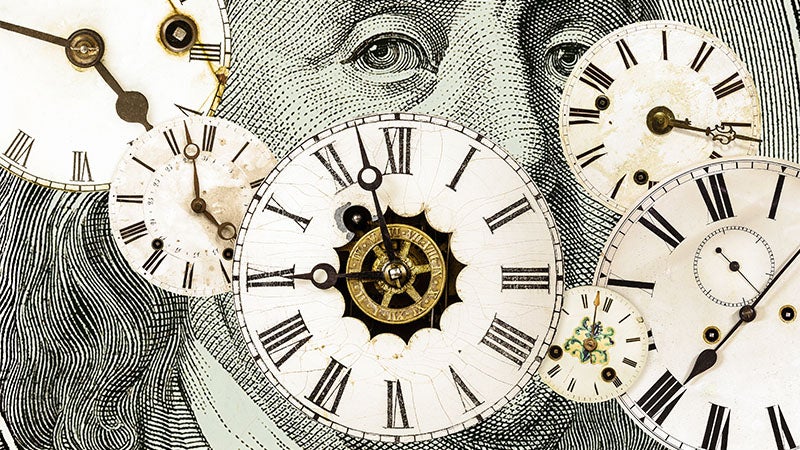Interest rates on top-yielding CDs are dropping. Here’s what that means for savers



Savers, take note: Your options for high-yielding certificates of deposit (CDs) are getting fewer by the day. What’s more, high-yield savings and money market accounts — variable rate deposit accounts that are prone to change in lock step with changes to the federal funds rate as set by the Federal Reserve — could see their yields drop following the central bank’s decision to further cut the federal funds rate.
Here’s what you need to know about how global financial markets and economic indicators can affect yields on deposit accounts such as CDs and high-yield savings, and how you should prepare for other future roadblocks in a declining rate environment.
What has happened in the financial markets as of late?
The Federal Reserve slashed the federal funds rate on Wednesday by 25 basis points, or a quarter of a percentage point. Raising the federal funds rate has the indirect effect of boosting annual percentage yields (APYs) on deposit products like CDs and savings accounts. Conversely, lowering the federal funds rate has the opposite effect.
We’ve already seen APY drops on deposit accounts promptly following the Fed’s rate cut in September, the first following a few years of either raising rates or keeping them steady.
Greg McBride, CFA, Bankrate chief financial analyst, says the amount of interest banks pay on savings and CDs at any point in time is more a reflection of their need for deposits than anything else. “They don’t pay those returns out of benevolence,” McBride says, noting that those cutting rates more drastically likely have less of a thirst for deposits than those who continue to offer the most competitive returns. “As savers, we’re in a position to exploit that difference to our benefit,” McBride adds.
Where are yields headed among deposit accounts?
CDs
Expect CD yields to move generally in one direction: downward. “CD yields have been declining and that is likely to continue, so there is no sense waiting to lock in,” McBride says. “You won’t get a better offer by waiting.”
If a CD around 4.50 percent APY is what you’re looking for, it’s still available. But that might not be the case for too much longer following the Fed’s third rate cut in as many meetings, especially with more cuts possible in the near future.
High-yield and traditional savings accounts
High-yield savings account yields might continue to decrease following more Fed rate cuts.
Unlike CDs, which typically have fixed-rate yields, the rates on savings accounts are generally variable, meaning they can change at any time at a bank or credit union’s discretion.
Yields for some traditional savings accounts might not move at all, especially those that haven’t increased their yields during the time the Fed’s raised rates 11 times starting in March 2022. For example, Chase’s Savings and Premier Savings accounts each have a standard rate of 0.01 percent APY.
Regardless of whether it’s a short or long horizon, you can lock in a yield that looks like it will outpace inflation handily— Greg McBride, CFA, chief financial analyst for Bankrate
Money market accounts
Money market accounts are a type of deposit account that sometimes combines features of both checking and savings accounts. Just like a savings account, money market yields might continue to trend downward following the Fed’s rate cut — and may tumble further if the Fed cuts rates again soon.
What’s ahead for 2025, and how should you prepare for possible headwinds?
Rates are poised to move lower and might move lower for some time. CDs allow you to lock in rate for a period, unlike savings deposit accounts which generally have variable yields. But CDs might not be for everybody.
For instance, a CD might not be a good option for people who are using that cash in the near future or people who don’t have an emergency fund, which should be kept in a liquid savings account.
Those considering a CD should consider these questions:
- Will you need to withdraw the money during the CD’s term?
- Will the money you’re locking away in the CD earn a guaranteed APY?
- Do you have enough money available to ensure you won’t need to withdraw from the CD and pay an early withdrawal penalty?
If you feel that a CD is right for you, don’t wait, as it might lead to lower yields. “Further declines in CD yields make now an opportune time to lock in, and at a yield that is likely to outpace inflation over the term of the CD,” McBride says. “Savings account and money market rates are variable and will decline further in the months ahead, but the best yielding accounts are still well above inflation and that will remain so for the foreseeable future.”
If a bank or credit union changes its yield on your savings and/or money market account, you could end up with a less-than-competitive APY. That’s why McBride says it’s a good idea to compare APYs when you receive your monthly statement. “You’ve got to know where you stand and what else is available,” McBride says.
Bottom line
Even though rates have been decreasing, it’s still a great time to save as top yields are still outpacing inflation. As long as you’re earning a yield that’s well above inflation, your money isn’t losing purchasing power.



